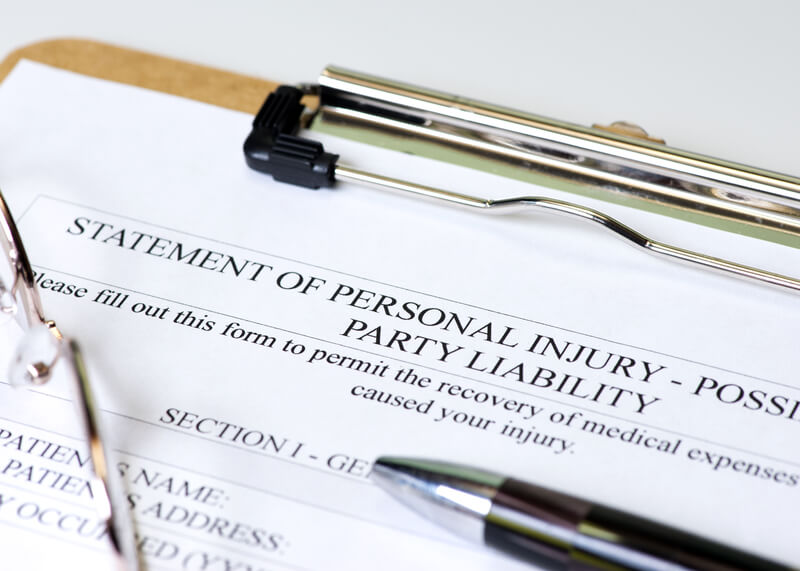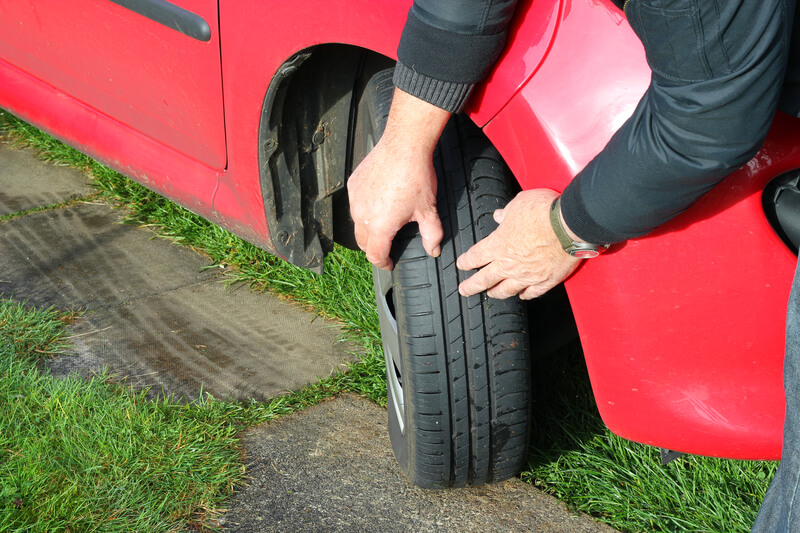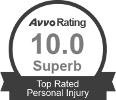Biking can be a great way to explore Atlanta. With the BeltLine, PATH and a growing investment in urban bike lanes, it’s becoming increasingly possible to leave your car at home and bike to work, to school or just around town for fun. Atlanta’s biking community has put in years of work to push for safer roads, more dedicated biking spaces and active engagement, with group rides and city tours.
Here at Litner + Deganian, bicycling is one of our favorite means to get around town, offering exercise, mental clarity and an alternative to hours spent in the car. Early-career Steve even turned a few heads at his first big firm job by biking to work, his suit safely stashed in a backpack.
But for biking to be widely accepted in a car-centered city like Atlanta, riders have to feel safe. Building that safety takes a lot of proactive steps, like infrastructure changes and education so cyclists can bike smart and drivers can drive respectfully. But it also takes accountability. As a law firm with specialties in bicycle accident cases, we believe it’s critical to hold motorists accountable when they behave unsafely on the road, and doing so starts at the scene.
What should you do after a cycling accident?
Unfortunately, car accidents involving bikes often produce serious injuries—it’s hard to walk away unharmed from even a low-speed accident when there’s nothing protecting your body. But bikers who don’t have obvious injuries sometimes make a critical error right after the accident: They don’t treat it like they would a car crash. After a crash involving a vehicle and bike, here’s what you should do:
- Get somewhere safe. After a bike accident, the most important thing to do is move to safety. You don’t want to be involved in a secondary crash.
- Call 911. Next, contact the police and, just as you would in a crash involving vehicles, wait until an officer arrives. If you decide to brush it off, or agree to part ways with the driver before contacting the police, you won’t be able to hold the driver responsible when your adrenaline fades and you realize you’re actually injured. When you can, it is best to wait for a police report, as this document can be very important in your legal representation. As you might be hurt and overwhelmed, it’s also smart to call a loved one to help.
- Document the scene. Once the police arrive, be sure you get a chance to share your version of what happened with the officer. Exchange contact information with the driver and obtain his or her insurance information. Gather the names and contact information of any witnesses who saw the crash take place. You can take pictures of the scene if doing so doesn’t put your safety at risk. If a police report is issued, basic scene documentation will be provided; however, additional documentation such as photos or scene descriptions can be vital in an injury attorney’s legal advice.
- See a doctor. Even if you didn’t require emergency care, see a doctor as soon as possible after the accident, even if you’re just feeling sore or uncomfortable. Your provider may check you for common bicycle accident injuries such as head injuries, sprains, dislocations or fractures.
- Write it down. Once you’re able to, write down or ask a family member to write a private account of what happened while your memories are most fresh.
- Contact a bicycle lawyer. If you’ve been hurt, a bicycle crash attorney can research the accident, take a look at your damaged equipment and review your medical records to help you negotiate for a fair settlement.
- Don’t fix or trash your damaged gear. Hang onto your damaged bike, helmet and gear for the time being. Your bike accident lawyer may want to take a look at the items or photograph them for use in your settlement negotiations. Once you’ve been given the OK to move on, be sure to replace helmets involved in a crash and have your bike professionally inspected and repaired.
Understanding bike laws and Georgia’s “3-feet law”
According to Georgia law, bikes are legally classed as vehicles. This means bicyclists need to follow general traffic laws, just like cars. There are also a few bicycle laws specific to bicycle riders, like not riding on sidewalks or staying as close as possible to the right side of the road.
Georgia also has a “3-feet law” for drivers—requiring drivers to give at least 3 feet of space to cyclists when passing, though updates in 2021 pushed to more clearly define protections. Now, drivers must change lanes when passing a bike if it’s possible to do so. If drivers can’t move to an open lane, they must slow to 10 mph below the speed limit, or to 25 mph, whichever is greatest, and still give 3 feet. Drivers who break the new law can be charged with a misdemeanor and fined.
How can a bicycle accident attorney help me with my injury claim?
Bicyclists have as much of a right to be on the road as drivers, but after accidents, insurance companies often try to find ways to place blame on the bike rider.
Of course, bicyclists can share some of the responsibility in an accident. Bikers who don’t follow traffic laws not only put themselves at risk of catastrophic injuries and build on a sometimes-negative image, they seriously limit their chances for a full personal injury recovery if they’re involved in a crash. Georgia is a comparative negligence state, meaning that if both a bicyclist and a driver contribute to a crash, the driver can still be held partially liable, though cyclists who follow traffic laws have a better chance at a fair settlement.
Bicyclists are often hurt or killed in accidents that are not at all their fault, however. According to the CDC, 64 percent of bicyclist deaths happen on stretches of road away from intersections, where drivers may fail to see a cyclist or pass unsafely. Bikers are also at risk:
- When a car traveling in the opposite direction makes a left turn in front of the bike. Drivers sometimes check for cars but fail to notice cyclists, or they assume the cyclist isn’t traveling fast enough to strike the car.
- When a car passes a bike traveling on the far right side of the road and cuts the cyclist off with a right turn. Or when a bicyclist passes a car on the right and the car makes a right turn into the bike.
Cyclists also have to watch for cars backing out of driveways (a particular risk for children riding on the sidewalk) and for car doors opening into traffic that may result in an auto accident.
Insurance companies will often try to argue that the injured biker wasn’t far enough to the right or was otherwise behaving unsafely. A bike accident attorney will not only help remind the insurer about Georgia’s “3-feet law,” but document the accident scene. This might involve measuring the width of the roadway, speaking with witnesses or reviewing footage taken by the rider.
Biking safely on Georgia’s roads
In 2021, 966 bicyclists were killed in crashes, according to the National Highway Traffic Safety Administration. While bicyclists are not responsible for the decisions of reckless drivers, there are steps to take to become a safer, more confident rider.
- Have the right gear. Your top priority as a bicyclist—whether you’re hitting a trail, a bike path or the street—is to properly outfit yourself for the road at all times. This means always wearing a helmet, even for short rides, and replacing it if you’re involved in a crash.
- Choose the right bike. You should feel comfortable on your bike, making sure it’s sized correctly for you and is properly maintained. If you ride regularly or you ride in remote areas, carry a simple repair kit as well and understand how to use it.
- Stay visible. Add reflectors and lights to your bike and trailers. Also wear reflective, high-visibility clothing. If you can shift your ride to daylight hours, consider doing so.
- Assume no one sees you. Even if you’re following the rules of the road and you’ve made yourself visible, assume drivers won’t see you. Be particularly careful when you’re in a driver’s blind spot, when you pass a car on the inside, when you’re driving past side streets or driveways, or when you see an oncoming car preparing to turn left.
- Stay focused. Don’t listen to music or wear headphones while you bike, and avoid distractions from your phone—just like you would when driving a car. Never bike while under the influence of drugs or alcohol.
- Choose a route you’re comfortable with. If you have a destination in mind, take time to plan a trip that keeps you off roads you don’t feel safe riding on.
- Watch for hazards. Stay alert for potholes (hello, Atlanta roads), gravel or debris and metal plates.
Most importantly, make sure you’re 100 percent confident on your bike before hitting city streets. This might mean starting by biking around a park path or in a quiet neighborhood. If you haven’t ridden for a while, it might mean taking some time to build your strength and alertness before tackling a full commute. You can even take a class to build your skills or practice safety drills.
E-Bike safety considerations
Over the past few years, e-bikes have become more accessible and popular. Riding in a hilly city like Atlanta becomes less of an athletic feat with a motor assist. The ability to power up can make the difference for riders committed to regularly commuting by bike or wishing to downsize to a single-family vehicle.
But e-bikes can also get up to nearly 30 mph—faster than the average Tour de France rider, according to Fortune. With hacks, they can go much faster. Higher speeds mean greater risks and injuries more akin to motorcycle crashes, without the protective gear motorcyclists usually wear. E-bike crashes might result in TBIs, spinal injuries, fractures and open wounds. Young riders, including older kids and young teens, may have an especially hard time handling bikes at such speeds, and they’re unlikely to understand the rules of the road.
According to the Consumer Product Safety Commission, micromobility products (e-bikes, e-scooters and hoverboards) saw a 21 percent rise in injuries from 2021 to 2022. Reporting on micromobility device deaths is still developing, but the CPSC notes that most deaths involve motor vehicles. E-bikes might move at the same speed as cars, but they’re small and almost completely quiet. Many cars fail to see them, or don’t expect them to move as quickly as they do.
If you’re riding an e-bike, follow the same rules as cyclists—expect cars will not see you and ride as predictably as possible. Also invest in safety gear, particularly a helmet, and dress protectively.
Atlanta bicycle accident attorneys
If you’ve been hit while riding your bike, a bicycle accident lawyer can help. The personal injury lawyers at Litner + Deganian have experience representing bicyclists who’ve been hurt in Atlanta traffic. Contact us today for a free consultation and case evaluation.












